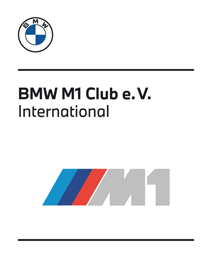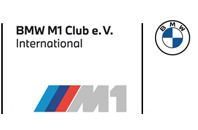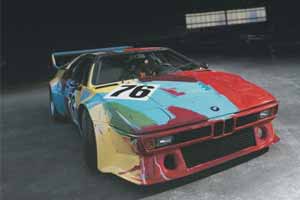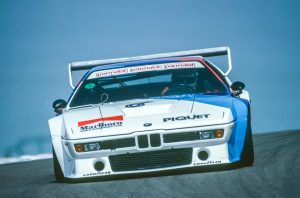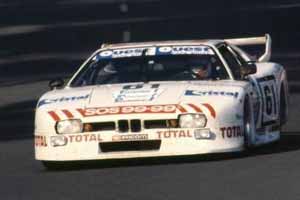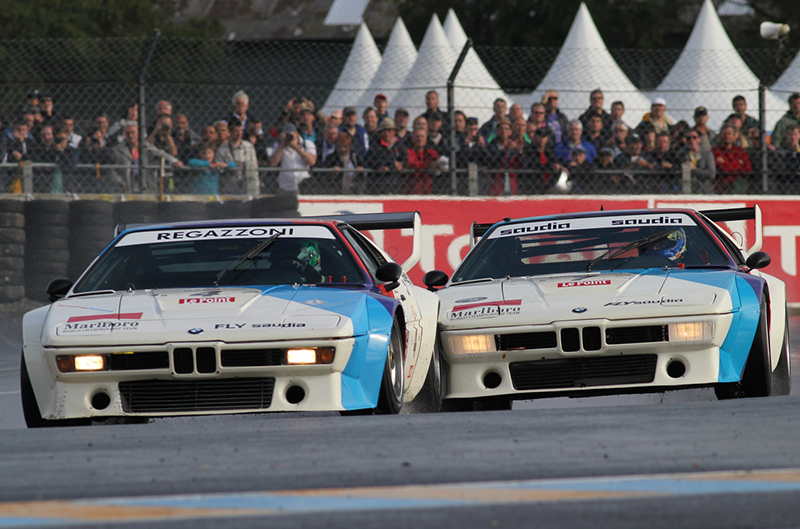The story of the BMW M1 in Le Mans
A concise history of the BMW M1 at Le Mans
By James Knowles with his kind permission for release
The nineties have proven a fortunate time for our beloved marque at the 24 Hours of Le Mans. Under the guise of the McLaren F1 and the Williams-built Le Mans Prototype, BMW has garnered two overall wins and several fine placings in the endurance classic. Undoubtedly, this era will be remembered as one of intense BMW participation and competitiveness. Prior to this period, the most concentrated BMW effort came during the late seventies and eighties. Although several fine BMW-powered entries participated in the Group C era of the mid to late eighties, the intensity of these efforts paled in comparison to the period of the M1’s participation from 1979 to 1986.
The spectacular BMW M1, Munich’s only mid-engine production car, competed at Le Mans over a span of eight years. During these eight years a total of twenty-two M1s qualified for the twenty-four hour race, with a disappointing number of seven classified finishes. Amongst these seven finishes were two class wins. With such results it is apparent that success at Le Mans was not so easy for the M1, and this stemmed from two distinct areas – strong competition and poor reliability. Despite the lack of success achieved by the M1 at Le Mans, this is a history worth presenting because of the level of participation by the factory and privateers, as well as the exciting nature of the M1 itself.
The cars
Generally speaking, if you saw an M1 at Le Mans it was in one of two forms. One version resembled the ‘ProCar’ M1 in appearance, with a deep front air dam, wheel arch flares, and a large rear wing or spoiler. In this form it competed in the following classes: IMSA (1979-1980), IMSA GT (1982), FIA Group 4 (1981), and FIA Group B (1983-1986). The second form featured an extended front air dam, rear wing, and fender flares, sometimes with a large NACA intake directly in front of the rear wheel arches. This version competed in IMSA GTX (1982), and FIA Group 5 (1981-1982). Although each differed greatly in appearance, both versions used the same 3.5-liter inline six-cylinder 470 horsepower engine. Despite the impressive output of the M1’s engine, it was not on par with its primary competition, the Porsche 935. The 935 had a twin-turbo six-cylinder engine which was rated at 590 horsepower, but, by adjusting the boost setting, as much as 630 horsepower was possible. In addition, the M1 was a heavier car than other cars in its category. Group 4 BMW M1s generally topped the scales around 1130 kilograms, where the Ferrari Boxer weighed in at 1120 kilograms and the Porsche 935 K3 at 970 kilos.
The 935 was also very class-flexible, and until its last year of competition, it would be grouped in almost every class in which the M1 was entered. Needless to say, the Porsche 935 dominated this category of racing throughout most of the M1’s competitive life. However, from time to time the M1, along with class peers such as the Ferrari BB512i and Lancia Beta Monte Carlo, were able to soldier on to fine results.
Along with a lack of power, dismal reliability in many problem areas afflicted M1s at Le Mans. Engine failures were much too common, resulting in the greatest number of retirements. An Achilles heel of the M1 engine was the crankshaft damper. Failure of this component occurred quite often, and not only led to downtime in the pits to replace the damper, but also led to engine failure if the problem was not noticed early. Clutch problems befell many M1s during their runs at Le Mans, slowing their progress due to extended pit stops to bleed the clutch, if not replace to it altogether. Gearbox failures were common, but these were cured by rebuilding the gearbox, a common exercise amongst M1 pit crews. In contrast to current rules, a rebuild was necessary, as the period Le Mans regulations did not permit gearbox exchanges.
The drivers
The M1s were driven by many talented personalities of various backgrounds. Familiar BMW factory drivers, most of them Formula One drivers as well, piloted the M1 at Le Mans – Johnny Cecotto, David Hobbs, Dieter Quester, Hans Stuck, and Mark Surer, to name a few. Other Formula One drivers also drove the M1, such as Philippe Alliot, Christian Danner, Jean-Pierre Jarier, Didier Pironi, and Manfred Winklehock (brother of former BMW factory driver Jo Winklehock). In addition to drivers, one Formula One team owner has driven an M1 at Le Mans – Jordan Team Principal Eddie Jordan. Coincidentally, Jordan shared the 1981 #53 Group 5 M1 with Steve O’Rourke, at the time acting manager of Pink Floyd. It should come as no surprise that, for the 1982 event, O’Rourke convinced his client, notable car enthusiast and Pink Floyd drummer Nick Mason to share a drive in the #62 IMSA GTX M1. Quite a star-studded driver list if there ever was one!
The Races
1979
The entry list for the 1979 24 Hours of Le Mans contained two very interesting BMW M1s. With its maximum-regulation Group 5 bodywork, the March Engineering entry looked like an M1 on steroids, with its extended body length, massively oversized fenders, and enlarged front air dam and rear wing. In addition the body was built on a lightweight spaceframe, and sported a 3.5-liter turbocharged engine. Despite its promising qualities, it was too slow to qualify.
The second M1 entry was perhaps a bit more interesting, as it was the famous Art Car painted by Andy Warhol. Sharing the driving duties of this car was Herve Poulain, who conceived the idea of the Art Car with the Alexander Calder designed 3.0CSL that ran the 1975 Le Mans race. This M1 acquitted itself well, qualifying twenty-third overall and third in class, although it was a full nine seconds a lap down from the class-leading Porsche 935 K3.
The maiden outing was a trying one, as the colorful M1 required replacement of all four brake discs, the clutch, as well as a gearbox rebuild. Running half the race on five cylinders, it was miraculous that the car finished sixth overall, and only twenty-two laps behind the winners. It was aided in its efforts by a thunderstorm Sunday morning, which narrowed the advantage of the faster cars. Noteworthy is the class-winning/second overall Porsche 935, which was driven by fifty-three year old Paul Newman in his first Le Mans outing. With such a promising result for the M1, one might think that the future would hold much greater glories. Unfortunately, this would be the finest placing achieved by an M1 at Le Mans.
1980
Five M1s qualified for the 1980 24 Hours of Le Mans. Nearly as spectacular as the Warhol Art Car of 1979 was the #83 BMW France entry, which sported a map of France on its bodywork. This car was kept in good company by the #84 Marlboro-backed entry driven by Hans Stuck, and three other M1s including a reappearance by the March Engineering entry. This year substantial modifications were made to the March M1 including drastic reductions in body length, front and rear track, repositioning of the fuel tank, and a standard 3.5-liter engine in place of the turbocharged unit. Despite these modifications, the car was no faster than the standard M1s down the Mulsanne Straight, and was outqualified by three of them. The best time amongst the five M1s was 2/100ths of a second slower than the 1979 entry, and it shared the same grid position.
This did not compare favorably with the competition, as the class-leading Porsche qualified second overall. The great breadth in qualifying times would seem to foretell a frustrating race for the M1s, but much like the 1979 race, weather conditions would play a big role in the 48th running of Le Mans. An intense thunderstorm covered the circuit before the start, and this enabled two BMW drivers to achieve extraordinary results because of great fuel economy and incredible wet-weather driving talent. Stuck took the #84 Marlboro M1 from twenty-third to second overall by the end of the first hour, and remained in that position at the end of three hours. This performance was nearly matched by the #83 BMW France entry, which had climbed to ninth by the second hour, and held it through the third hour.
It was at this point that a multitude of misfortunes hit the BMW effort. First, Stuck ran into a stubborn back marker, which required an extended pit stop for replacement of the spoiler, windshield, and radiator. Then the BMW France entry encountered front-end damage due to a spin resulting in a steering rack change. Additionally, just before the six-hour mark, the March-BMW entry would retire due to an accident on the Mulsanne. This would conclude a frustrating race for the car marked by multiple tire punctures, incurable vibrations front and rear, and steering problems. More problems happened to the BMW France entry around this same time as the car pitted for body repairs and a check of the suspension for damage. Meanwhile, the Marlboro car had worked its way up to eighth place after nine hours of racing, despite crankshaft damper problems. It would climb as high as seventh during the early hours of Sunday, eventually falling out of the top ten by the fourteenth hour. More retirements were to come for the M1s, with the #96 Garage du Bac entry having an accident Sunday morning, and the #95 ZOL Auto M1 leaving the race early Sunday afternoon with engine trouble after enduring clutch and gearbox problems. This left the remaining #83 BMW France and #84 Marlboro entries to finish the race fourteenth and fifteenth overall and fourth and fifth in class, behind two Porsche 935K3s and a Ferrari Boxer. As was the fashion set in 1979, each finishing M1 did so running on five or less functioning cylinders.
1981
The 1981 endurance classic saw a total of six M1s fill the grid, two entries in Group 4 and four in Group 5. A distinct difference existed between two pairs of the Group 5 entries. Two were lightweight spaceframe models from the shops of Peter Sauber, who would later gain fame as a Formula One team owner and team manager for the Mercedes Group C effort. They were ninety kilograms lighter than the other Group 5 cars, which were ProCar conversions. This difference was bourn out in qualifying times as the #50 BASF and #52 Wurth entries were within 3/100ths of a second of one another, and nearly eight seconds ahead of the #51 ZOL Auto and #53 SDC Builders entries. The #71 and #72 Group 4 M1’s netted first and second in class, explainable by the low number of class entries that year.
An omen for the M1s greeted the #51 ZOL Auto car on the first lap as it pitted to have the clutch bled. This would not be the last stop of this nature for the car, which also required changing of all six spark plugs. Before the two-hour mark, the #53 SDC Builders M1 also required an extended pit stop to bleed the clutch, and repair damaged bodywork from an accident caused by a bad gear change. One bright spot of progress was the Nurburgring-winning bright red #50 BASF entry, which had made its way to eighth overall by the first hour. This promising start was first thwarted by clutch problems, and then ended with a crash before six hours had been completed. More troubles for BMW were to come before Sunday, with the #71 Prinz von Bayern entry retiring at the seven-hour mark with crankshaft damper failure. In addition, just before midnight, the #53 SDC Builders entry pulled into the pits with a severe engine vibration, which warranted replacement of the crankshaft damper. Unfortunately, its bad luck did not end as it retired with engine failure after 20 hours of racing. The same misfortune befell the #52 Wurth entry and the #72 ZOL Auto Group 4 machine before noon on Sunday. Ironically, the sole finishing M1 was the #51 ZOL Auto entry, which had pitted on the first lap, soldiering on to a sixteenth place finish after undergoing a gearbox rebuild.
1982
With the advent of the new Group B and Group C regulations, 1982 was a transition year at Le Mans. BMW withdrew from endurance racing due to these regulations, which might explain the fifty percent reduction in M1 entries compared to 1981. The new Group C formula brought great interest, and the faster cars forced the M1s further toward the back of the grid, with the quickest M1, the #61 SOS 99.99 car in thirty-ninth position overall and second in Group 5. The #62 Olympus/Crockford’s / Emka IMSA GTX entry returned to Le Mans after running the 1981 race as the #53 SDC Builders entry. It qualified at a time of just over four minutes, which was good for a Group 4 M1, but was quite poor for a former Group 5 entry. It was followed by the unique #85 multicolored IMSA GT entry of Tony Garcia, which sported a large rear spoiler in place of the ubiquitous rear wing.
Progress was swift for each of the IMSA class machines as the #62 GTX M1 gained thirty positions in the first five hours. The #85 IMSA GT entry gained sixteen positions in the same amount of time, which placed it just one spot adrift of the of the #61 Group 5 entry in thirty-fifth place. Throughout the night, the Group 5 and GTX entries continued their fine runs, with the #62 M1’s advance to eleventh overall mildly hindered by a crankshaft damper replacement, and the #61 M1 making steady forward progress having climbed from thirty-fifth to eighteenth in eight hours. The #85 bespoilered M1 was not so fortunate, having succumbed to engine failure around 3:00 am. Further troubles awaited the M1s with the #62 M1 requiring a clutch change before noon on Sunday, and the #61 car a gearbox rebuild after reaching fourteenth position. The rebuild caused the car to lose several places, but it was able to reenter the race and finish eighteenth, being the last car classified. Having remained amongst the top fifteen for three-quarters of the race, the #62 car appeared to have a curse placed upon it during the waning hours. After having its complete exhaust system replaced, the car developed an oil leak with less than three hours to go, ending its fine run. It was a truly disappointing year for the M1, yet 1982 was probably its best chance at a win in a straight fight against the Porsche 935, the fastest of which qualified at a time of 3:44.03. In 1981 the #50 BASF Group 5 M1 had qualified at 3:47.63. With another year of development, problem solving, and a tad bit more speed, the prospects would have been fabulous.
1983
With a total of five entries for Group B in 1984, the two M1s entered did well to qualify first and third in class. Each reaching over 170 miles per hour down the Mulsanne Straight, the #101 Castrol-liveried entry qualified ahead of the #109 Ecole des Cadres M1 which, at a time of 4:14.25, has the stigma of being the slowest qualifying M1 at Le Mans. It proved to be a torrid race for the Group B entrants with no greater than ten positions covering all competitors during the first seven hours. After one of the Porsches retired due to engine failure, the #101 Castrol M1 did so as well with recurrent wheel-bearing problems at the ninth hour. The battle remained heated amongst the remaining three contenders, with the lead swapping between the #109 M1 and a Porsche 930 turbo several times during the early morning hours. At the eighteen-hour mark, the Ecole des Cadres M1 would take the class lead for good, reaching as high as thirteenth, but finishing fourteenth overall, the highest placing by a stock–bodied entry. This fact is quite significant as all other cars in the race were purpose-built endurance racers classified in either the very fast Group C1 or the scaled-down Group C2 category.
1984
Mit 5 Meldungen in der Gruppe B in 1984 qualifizierten sich zwei M1 als 1. und 3. in der Klasse. Beide erreichten über 270 km/h auf der Mulsanne-Geraden. Die Startnummer 101 CASTROL M1 qualifizierte sich vor der Startnummer 109 Ecole des Cadres M1 mit einer Zeit von 4:14.25 und ist gebrandmarkt als langsamster M1 der sich je in Le Mans qualifiziert hat. Es war ein heißes Rennen unter den Gruppe B Teilnehmern während der ersten 7 Stunden. Nachdem ein Porsche mit Motorschaden ausfiel machte es ihm die Startnummer 101 CASTROL M1 mit wiederholten Radlagerproblemen in der 9. Stunde nach. Der Kampf blieb hitzig unter den verbliebenen drei Kämpfern mit der oftmals wechselnden Führung zwischen der Startnummer 109 M1 und einem Porsche 930 Turbo während der frühen Morgenstunden. In der 18. Stunde übernahm der Ecole des Cardes M1 die Führung in der Klasse, erreichte den 13. Platz und beendete das Rennen als 14. gesamt. Die beste Platzierung für einen Teilnehmer mit Serienkarosserie. Diese Tatsache ist deshalb so bedeutsam, weil alle anderen Teilnehmer an diesem Rennen mit Spezialkarossen für Langstreckenrennen ausgestattet waren, eingeteilt in die schnelle Gruppe C1 oder in die abgestufte Kategorie Gruppe C2.
1985
Group B entries represented the only stock-bodied category in 1985, and drew only four entrants, which included three M1s. The #152 Vogelsang BMW posted the fastest qualifying time by an M1 in four years with a time of 3:54.28, being clocked at an impressive 189 miles per hour down the Mulsanne. The remaining M1s qualified second and third in class, all M1s outqualifying the Porsche 911 SC which was dead last in the field. Again, a promising start blessed the M1s, with #152 placed twenty-seventh, #151 twenty-ninth, and #157 thirty-second at the end of the first hour. Almost as quickly as it had made progress, the #152 Vogelsang M1 began falling back, eventually retiring with a broken gearbox at the end of three hours. The remaining M1s carried on, making slow but steady progress up the field, never really being threatened by the 911 SC which retired after eight hours with a blown head gasket. Early Sunday morning, the bright orange #157 retired with engine failure after rising to twenty-fourth place overall. This left the #151 Motorsport Wheels entry alone to persevere another fourteen hours, and it did, finishing the race a remarkable fifteenth place of twenty-four total finishers, ahead of many faster Group C cars. It is also credited with completing the most laps of any BMW M1 at Le Mans. At 306 laps, it is worth noting that having achieved the same task in 1979 would have placed the car on the same lap of that year’s overall winners.
1986
1986 was the final year for stock-bodied cars for several years, and the final year for the M1. The two stock-bodied cars were the Porsche 961/959 entered in GTX, and the #111 Motorsport Wheels M1 entered in Group B. Although it qualified dead last at a time of 4:08.68, it outqualified a slower Group C1 and Group C2 car in order to make the field. Despite a spin on the very first lap, the M1 made remarkable progress, climbing to fortieth by the end of the first hour, and to twenty-seventh by the seventh hour making the most of a trouble-free run. However, just before midnight the first of many pit stops were made to purge the cooling system. This would not hamper the car’s progress much, as early Sunday morning in the race’s thirteenth hour, the #111 M1 would attain its highest position of sixteenth overall. The cooling system problems persisted, with a system purge during each hourly fuel stop Sunday morning. Despite this trouble, a good finish seemed inevitable as the car held eighteenth overall at 2:00 Sunday afternoon. Sadly, around 2:30 the car came into the pits with gearbox problems. It remained in the pits for over an hour, but reentered the race with less than 30 minutes go with the transmission locked in second gear. This was a necessity as only cars running at the end of 24 hours are classified in the results. Although it was able to endure until the end, it was still not classified having traveled an insufficient distance.
BMW M1 entrants at Le Mans
| Year | No. | Cl. | Driver | Sponsor/Declarant | Start Pos./Cl. | Positioning total |
|---|---|---|---|---|---|---|
| 1979 | 76 | IMSA | Marcel Mignot F/ Manfred Winkelhock D/ Herve Poulain F | BMW AG/Herve Poulain F | 23 / 3 | 6 |
| 1980 | 82 | IMSA | Michael Korten D/Patrick Neve B/Manfred Winkelhock D | March Racing/Reserve | 35 / 12 | DNF (Accident) |
| 83 | IMSA | Dieter Quester A/Didier Pironi F/Marcel Mignot F | BMW France | 25 / 9 | 14 | |
| 84 | IMSA | Hans-Joachim Stuck D/Hans-Georg Buerger D/Dominique Lacaud F | Marlboro/BMW Motorsport GmbH/Dominique Lacaud | 23 / 7 | 15 | |
| 95 | IMSA* | Laurent Ferrier F/Francois Servanin F/Pierre-Francois Rousselot F | ZOL Auto | 33 / 11 | DNF (Engine) | |
| 96 | GTX | Philippe Alliot F/Jaques Guerin F | Garage du Bac | 39 / 1 | DNF (Accident) | |
| 1981 | 50 | Gr 5 | Hans-Joachim Stuck D/Jean-Pierre Jarier F/Helmut Henzler D | BASF Video-Band/GS-Sport | 21 / 4 | DNF (Accident) |
| 51 | Gr 5 | Philippe Alliot F/Bernard Darniche F/Johnny Cecotto VE | VSD/LOIS/ZOL-Auto | 35 / 10 | 16 | |
| 52 | Gr 5 | Marc Surer CH/Dieter Quester A/David Deacon CAN | Würth/Team Sauber | 22 / 5 | DNF (Engine) | |
| 53 | Gr 5 | David Hobbs GB/Eddie Jordan IRL/Steve O’Rourke GB | SDC Builders,EMKA-Production/BMW Australia | 38 / 11 | DNF (Engine) | |
| 71 | Gr 4 | Christian Danner D/Leopold Prinz von Bayern D/Peter Oberndorfer D | München-Spatenbräu/Helmut Marko | 41 / 1 | DNF(Crankshaft) | |
| 72 | Gr 4 | Pierre-Francois Rousselot F/Laurent Ferrier F/Fancois Servanin F | VSD/LOIS/ZOL-Auto | 47 / 2 | DNF (Engine) | |
| 1982 | 61 | Gr 5 | Michel Gabriel F/Franco Gasparetti I/Roland Ennequin F | SOS 99.99/Roger Ennequin | 39 / 4 | 18 |
| 62 | IMSA GTX | Steve O’Rourke GB/Richard Down GB/Nick Mason GB | EMKA-Production/Olympus/Crockford’s | 44 / 8 | DNF (Oil leak) | |
| 85 | IMSA GT | Toni Garcia USA/Fred Stiff USA/Albert Naon USA | National Treaty/Tony Garcia | 52 / 4 | DNF (Engine) | |
| 1983 | 90 | Gr B | Leopold Prinz von Bayern D/Jens Winther DK/Angelo Pallavicini CH | Warsteiner/Angelo Pallavicini/Brun Motorsport | 45 / 1 | DNF (Gearbox) |
| 1984 | 101 | Gr B | Jens Winther DK/David Mercer GB/Lars-Viggo Jensen DK | Castrol/Jens Winther | 46 / 1 | DNF Wheel Bearing |
| 109 | Gr B | Pierre De Thoisy F/Jean-Francois Yvon F/Philippe Dagoreau F | Ecole des Cadres/Helmut Gall | 49 / 3 | 14 | |
| 1985 | 151 | Gr B | Edgar Doren D/Martin Birrane IRL/Jean-Paul Libert B | Motorsport Wheels/Helmut Gall | 44 / 2 | 15 |
| 152 | Gr B | Harald Grohs D/Altfrid Heger D/Kurt Koenig D | Vogelsang BMW | 39 / 1 | DNF (Gearbox) | |
| 157 | Gr B | Enzo Calderari CH/Angelo Pallavicini CH/Marco Vanoli CH | Angelo Pallavicini | 50 / 3 | DNF (Engine) | |
| 1986 | 111 | Gr B | Pascal Witmeur B/Jean-Paul Libert B/Michael Krankenberg D | Motorsport Wheels (MSW)/MK-Motorsport | 50 / 1 | not classified |
* one source lists this car in GTX, another in Group 5
The M1 Register and the BMW M1 Club e.V. wish to thank James Knowles for this fascinatingly detailed account of M1s at Le Mans. It adds immeasurably to the knowledge base of all M1 enthusiasts.
James would also like to acknowledge his sources: Le Mans ‘The Porsche Years’ 1975-1982 and Le Mans ‘The Porsche and Jaguar Years’ 1983-1991, compiled by R.M. Clarke, published by Brooklands Books, and Porsche: Excellence Was Expected by Karl Ludvigsen, published by Princeton Publishing. Also, James sends a huge thank you to Rick Mason (www.maisonblanche.co.uk) for information and photos.
M1 Register, c/o Gordon Medenica, 475 Monterey Avenue, Pelham, NY 10803
Tel: (914) 738-7342 fax: (914) 738-5231 email:
More interesting pages on the subject PROCAR
